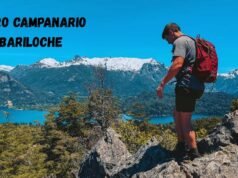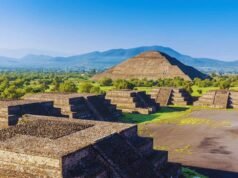Iceland isn’t just a destination—it’s an adventure waiting to happen. Known as the Land of Fire and Ice, this Nordic island packs an extraordinary range of natural wonders into a landscape that feels like another planet. Picture thundering waterfalls, volcanic black sand beaches, geothermal lagoons, and glaciers you can walk on.
Whether you’re chasing the Northern Lights across a winter sky or basking in the Midnight Sun on a summer hike, Iceland offers year-round magic. But it’s not all about nature; Reykjavik’s vibrant culture, Viking history, and unique cuisine add flavor to every journey.
From the thrill of snowmobiling on a glacier to soaking in a hot spring under the stars, Iceland is a place where unforgettable moments are around every bend. Ready to plan your escape? Here’s your ultimate guide to the top things to do in Iceland—experiences that will stir your soul and ignite your sense of wonder.
When is The Best Time to Visit Iceland?
The best time to visit Iceland largely depends on your travel goals and tolerance for varying weather conditions. Summer (June to August) is ideal for travelers who want to explore the country’s full range of natural wonders. During this period, roads are more accessible, the Highlands are open, and the Midnight Sun provides up to 24 hours of daylight, making it perfect for long hikes, camping, and sightseeing.
Winter (October to March), on the other hand, transforms Iceland into a snow-covered wonderland and offers the best chance to see the Northern Lights, although days are short with only 4–6 hours of daylight in December. Shoulder seasons, like May and September, strike a balance with fewer tourists, mild weather, and relatively lower prices, making them great for budget-conscious travelers.
Explore Iceland’s Iconic Natural Wonders
Iceland’s iconic natural wonders offer a breathtaking glimpse into the raw power and beauty of the Earth. From thundering waterfalls to geysers, glaciers, and volcanic landscapes, these awe-inspiring sites showcase the country’s unique geology and unforgettable, otherworldly scenery.
The Golden Circle
No trip to Iceland is complete without exploring the Golden Circle—a popular route covering three major attractions:
- Þingvellir National Park: A UNESCO World Heritage Site where the North American and Eurasian tectonic plates meet.
- Geysir Geothermal Area: Home to Strokkur, a geyser that erupts every 5–10 minutes.
- Gullfoss Waterfall: A majestic two-tiered waterfall that thunders into a rugged canyon.
The Blue Lagoon
Just 45 minutes from Reykjavik, this geothermal spa offers soothing mineral-rich waters surrounded by lava fields. It’s perfect for relaxation after your flight or at the end of your journey.
Jökulsárlón Glacier Lagoon & Diamond Beach
Watch luminous blue icebergs float serenely across this glacial lagoon before washing up on the nearby black sand beach, where they glisten like diamonds.
Iconic Waterfalls
- Seljalandsfoss: Walk behind its curtain of water.
- Skógafoss: A powerful, wide cascade often framed by rainbows on sunny days.
Vatnajökull Glacier & Ice Caves
Iceland’s largest glacier offers seasonal ice cave tours that take you inside glowing blue tunnels of compacted ice—an otherworldly winter experience.
Related: Things to Do in Cannon Beach
15 Things to Do in Iceland

Iceland is a land of breathtaking contrasts—where fire meets ice, and waterfalls tumble beside lava fields. Whether you’re chasing the Northern Lights, soaking in a geothermal hot spring, or hiking through otherworldly landscapes, this Nordic island promises unforgettable experiences.
In this guide, we’ve rounded up 15 of the top things to do in Iceland, from iconic landmarks to hidden gems, offering something for every kind of traveler.
1. Explore the Golden Circle
The Golden Circle is Iceland’s most famous sightseeing route, covering Þingvellir National Park, Geysir Geothermal Area, and Gullfoss Waterfall. Þingvellir is both a geological marvel and a UNESCO World Heritage Site, where you can walk between two tectonic plates. Geysir is home to Strokkur, a geyser that erupts every few minutes, and Gullfoss is a thunderous two-tiered waterfall that’s breathtaking in any season.
2. Relax in the Blue Lagoon
Located near Keflavik International Airport, the Blue Lagoon is Iceland’s most iconic geothermal spa. Its milky-blue waters are rich in silica and minerals, perfect for relaxation and skin nourishment. Whether it’s your first stop or your last, it’s a luxurious way to unwind amidst lava fields and steamy geothermal mist.
3. Walk Behind Seljalandsfoss

Seljalandsfoss is one of Iceland’s most unique waterfalls—it features a walking path behind the cascade, offering a rare view from inside the waterfall itself. Standing behind the falls, surrounded by mist and echoing drops, is an unforgettable experience. Be sure to wear waterproof gear.
4. Visit Skógafoss Waterfall
Not far from Seljalandsfoss, Skógafoss is a massive 60-meter-high waterfall known for its powerful drop and frequent rainbows. You can climb a staircase alongside the falls for panoramic views or walk right up to its base for a refreshing spray.
5. Marvel at Jökulsárlón Glacier Lagoon
Jökulsárlón is a spectacular glacial lagoon filled with drifting icebergs, located at the edge of Vatnajökull National Park. Just across the road, you’ll find Diamond Beach, where ice chunks wash ashore on black sand, creating striking contrasts that photographers love.
6. Snorkel in Silfra Fissure
Located in Þingvellir National Park, the Silfra Fissure is one of the only places in the world where you can snorkel or dive between two continental plates. The glacial water is crystal-clear, with visibility up to 100 meters, offering a surreal underwater experience.
7. Witness the Northern Lights
From September to April, Iceland offers prime conditions for seeing the Aurora Borealis. Head to rural areas with little light pollution—such as Þingvellir, Vik, or the Snæfellsnes Peninsula—for the best chances. Tour operators also offer guided excursions with aurora forecasts.
8. Bathe in a Natural Hot Spring
Beyond the Blue Lagoon, Iceland is full of natural geothermal pools. Popular choices include Reykjadalur Hot River, where you hike through a steamy valley to a warm river, and Landmannalaugar, set in the colorful Highlands and known for its scenic bathing spots.
9. Explore Reykjavik
Iceland’s capital is vibrant, artistic, and walkable. Visit Hallgrímskirkja Church for city views, stroll through Laugavegur Street for cafes and shops, and explore the Harpa Concert Hall. Reykjavik also offers rich cultural experiences, including museums and a buzzing nightlife scene.
10. Drive the Ring Road
Iceland’s Ring Road (Route 1) circles the entire island, offering access to most of its major sights. Driving the full loop takes 7–10 days and includes waterfalls, glaciers, volcanoes, fjords, and quaint villages. It’s one of the best ways to see Iceland’s diverse landscapes.
11. Ride an Icelandic Horse
Icelandic horses are small, sturdy, and known for their unique “tölt” gait. Horseback riding tours are available across the country, offering scenic rides through lava fields, past rivers, and along black sand beaches. It’s a cultural and peaceful way to connect with nature.
12. Visit Vatnajökull Glacier and Ice Caves
The Vatnajökull Glacier is the largest in Europe, and during winter, you can explore its incredible ice caves. Guided tours take you into sapphire-blue caverns sculpted by meltwater—an experience straight out of a fantasy novel. Tours are weather-dependent and operate from November to March.
13. Take a Whale Watching Tour
The waters around Iceland are rich with marine life. Húsavík, known as the whale-watching capital, offers near-guaranteed sightings of humpbacks, minkes, and even blue whales. Tours also depart from Reykjavik and Akureyri, and many include puffin-spotting in summer.
14. Visit the Snæfellsnes Peninsula
Often called “Iceland in Miniature,” the Snæfellsnes Peninsula offers volcanoes, lava fields, coastal cliffs, and picturesque fishing villages—all within a day’s drive. Highlights include Kirkjufell Mountain, Snæfellsjökull Glacier, and Arnarstapi’s coastal arches. It’s a compact showcase of Iceland’s natural beauty.
15. Hike in Landmannalaugar
Located in the remote Highlands, Landmannalaugar is famous for its multicolored rhyolite mountains, lava fields, and geothermal pools. It’s part of the Laugavegur trail, one of the most scenic multi-day hikes in the world. Day hikes are also available for those short on time, and the best access is during summer.
Read: Cannon Beach Tide Chart
Chase the Northern Lights
From September to April, Iceland offers one of the best chances in the world to see the Aurora Borealis. Head to dark, rural areas or book a tour from Reykjavik. For the best experience:
- Check the aurora forecast and weather conditions.
- Avoid full moon nights.
- Dress warmly and be patient—it’s worth it!
Embrace Icelandic Adventure
- Glacier Hiking & Ice Climbing: Join guided tours on Sólheimajökull or Vatnajökull glaciers.
- Snowmobiling & Super Jeep Tours: Explore Iceland’s highlands and icy expanses in adrenaline-pumping style.
- Snorkeling/Diving in Silfra: Swim between two continents in crystal-clear glacial water at Þingvellir.
- Horseback Riding: Ride on uniquely gaited Icelandic horses across lava fields or beaches.
- Whale Watching: Head to Húsavík, the whale capital of Iceland, for an unforgettable marine safari.
Immerse Yourself in Icelandic Culture
Immerse yourself in Icelandic culture by exploring its rich blend of ancient traditions, modern creativity, and strong community spirit. From Viking heritage and folklore to local cuisine, music, and art, Iceland offers a unique cultural experience that’s both authentic and unforgettable.
Explore Reykjavik
- Visit Hallgrímskirkja, the iconic church with sweeping city views.
- Browse the National Museum of Iceland and the Reykjavik Art Museum.
- Experience the nightlife, live music, and cozy cafes of Laugavegur Street.
Taste Icelandic Cuisine
Try traditional dishes like:
- Lamb stew (kjötsúpa)
- Plokkfiskur (mashed fish and potatoes)
- Skyr (Icelandic yogurt)
- Brave eaters can even sample fermented shark!
Attend Local Festivals
- Iceland Airwaves (November): An indie music festival in Reykjavik.
- Secret Solstice (June): A summer music festival celebrating the midnight sun.
Take Scenic Road Trips
Taking scenic road trips in Iceland is one of the best ways to experience the country’s raw and breathtaking beauty. From dramatic coastlines to volcanic landscapes, self-driving lets you explore at your own pace and discover hidden gems along the way.
Drive the Ring Road (Route 1)
Encircling the island, this 1,332 km highway offers a full tour of Iceland’s diverse landscapes, from fjords and glaciers to volcanoes and black sand beaches.
Westfjords & Snæfellsnes Peninsula
- Discover remote cliffs, puffin colonies, and hidden hot springs.
- Visit Snæfellsjökull, a glacier-capped volcano featured in Jules Verne’s Journey to the Center of the Earth.
South Coast Highlights
Ideal for a 2–3 day trip, visit:
- Seljalandsfoss and Skógafoss
- Reynisfjara Black Sand Beach
- Fjaðrárgljúfur Canyon
Read More: Cannon Beach, Oregon
Visit Hidden Gems and Remote Regions

- Landmannalaugar: A colorful highland region ideal for hiking and hot spring bathing.
- Westman Islands (Vestmannaeyjar): Reachable by ferry, these islands feature puffin colonies and volcanic landscapes.
- Askja Caldera & Víti Crater: Remote, lunar-like terrain in Iceland’s interior.
- Eastfjords: Quiet fishing villages, dramatic fjords, and reindeer sightings.
Practical Travel Tips
- When to Visit:
- Summer (June–August): 24-hour daylight, best for road trips.
- Winter (October–March): Northern Lights, snow-covered scenery, fewer crowds.
- Transportation:
- Rent a car for flexibility.
- Tours are ideal for those uncomfortable with winter driving.
- Safety:
- Always check the weather (via vedur.is) and road conditions (road.is).
- Be cautious near cliffs, glaciers, and geothermal areas.
- Accommodation:
- Book early in summer and holiday periods.
- Options range from hotels and guesthouses to camper vans and farm stays.
Do I Need to Rent a Car in Iceland?
Renting a car in Iceland is highly recommended for travelers who want flexibility and the ability to explore beyond Reykjavik. Many of the country’s best attractions—such as Seljalandsfoss, Skógafoss, Vatnajökull National Park, and remote hot springs—are best accessed by car.
In summer, 2WD vehicles are usually sufficient for the Ring Road, but if you’re planning to explore F-roads in the Highlands, a 4×4 is required by law. In winter, icy and snowy conditions make 4WD vehicles safer and more reliable, especially in the northern and eastern regions. Be sure to familiarize yourself with local driving laws, weather alerts, and road closures at road.is before setting out.
Read Also: Best Time to Visit King Tides Oregon Coast
Is Iceland Expensive for Tourists?
Yes, Iceland is considered one of the most expensive destinations in Europe, with high costs for food, accommodation, transportation, and excursions. A basic meal at a restaurant can cost between $20–$40, while gas prices are among the highest in the world. However, budget-conscious travelers can reduce expenses by:
- Shopping at local supermarkets like Bonus or Krónan
- Booking guesthouses or hostels instead of hotels
- Preparing meals using the tchen facilities in accommodations
- Opting for self-drive tours over organized excursions
- Visiting free natural sites such as waterfalls, geothermal areas, and hiking trails
With strategic planning, it’s possible to enjoy Iceland on a moderate budget without sacrificing the experience.
Can I See the Northern Lights Year-Round?
No, the Northern Lights (Aurora Borealis) are only visible in Iceland from approximately late August to mid-April, when the nights are dark enough to allow for aurora activity to be seen.
The peak viewing period is from October to March, when nights are longest and auroral activity is high. Ideal conditions include clear skies, minimal light pollution, and high solar activity. Top viewing spots include:
- Þingvellir National Park
- The Snaefellsnes Peninsula
- Vik Iceland and the South Coast
- Northern Iceland around Akureyri and Lake Mývatn
There are also Northern Lights tours with expert guides who track aurora forecasts and weather conditions. Apps like Aurora Forecast and websites like vedur.is helps increase your chances of witnessing this stunning phenomenon.
Is It Safe to Travel in Iceland?
Iceland is consistently ranked as one of the safest countries in the world, known for its low crime rate, clean environment, and trustworthy locals. Violent crime is virtually nonexistent, and travelers often remark on the peace of mind they feel while exploring even the most remote areas.
That said, nature in Iceland demands respect. The weather can change rapidly, cliffs and waterfalls are often unguarded, and geothermal areas can be dangerously hot. Always:
- Check weather forecasts and road conditions before long drives or hikes.
- Stay on marked paths and follow posted safety signs.
- Inform someone of your travel plans if venturing off the beaten path.
- Use apps like SafeTravel.is and 112 Iceland for emergency preparedness.
Following basic safety precautions ensures an enjoyable and secure trip.
What Kind of Clothing Should I Pack for Iceland?
Regardless of the season, layered clothing is essential for Iceland due to unpredictable and often extreme weather. Temperatures can vary dramatically in a single day, and you may encounter wind, rain, and sun within hours. A well-prepared packing list should include:
- Waterproof and windproof outer shell (jacket and pants)
- Thermal base layers (wool or synthetic; avoid cotton)
- Insulated mid-layers, such as fleece or down jackets
- Sturdy waterproof hiking boots
- Wool socks, gloves, hat, and scarf
- Swimsuit and towel for geothermal pools and hot springs
- Sleep mask (for summer) or headlamp (for winter)
Packing smart will keep you comfortable while hiking, sightseeing, or enjoying Iceland’s many outdoor activities.
To Know More: Top 7 Romantic Vacations in Oregon
Are Credit Cards Widely Accepted in Iceland?
Yes, credit and debit cards are widely accepted across Iceland, including in rural areas, gas stations, hotels, restaurants, and even public restrooms in some tourist areas. Many Icelanders prefer cashless payments, and some locations are fully card-only. It’s advisable to carry a chip-and-PIN-enabled card and ensure your bank is notified of your international travel.
You’ll also want to have a contactless card for convenience. Major networks like Visa and Mastercard are the most commonly accepted, while American Express may be limited. If you’re renting a car, ensure your card has enough available credit for the security deposit.
Conclusion
From lava fields and glaciers to ancient sagas and cutting-edge culture, Iceland offers more than just a vacation—it offers a journey into the extraordinary. Whether you seek adventure, relaxation, or inspiration, these things to do in Iceland will leave you with memories as vast and wild as the landscapes themselves.
















[…] Related: Top 15 Things to Do in Iceland […]
[…] Read Also: Things to Do in Iceland […]
[…] READ: Top 15 Things to Do in Iceland […]
Comments are closed.